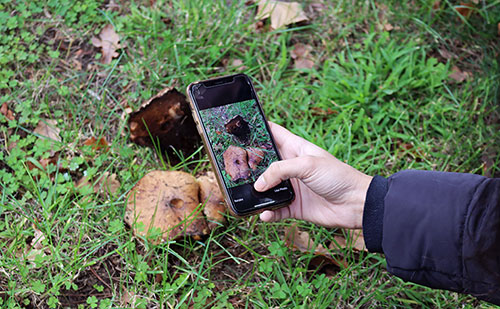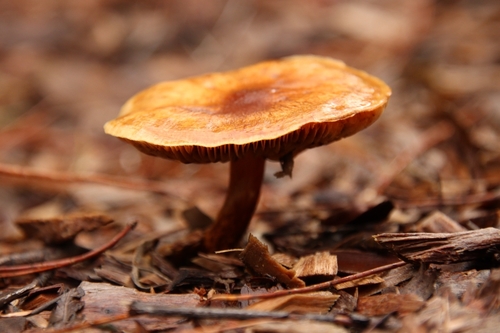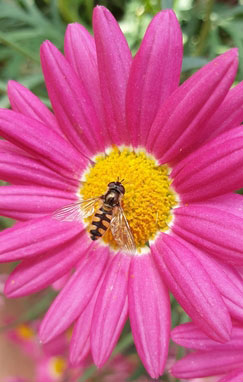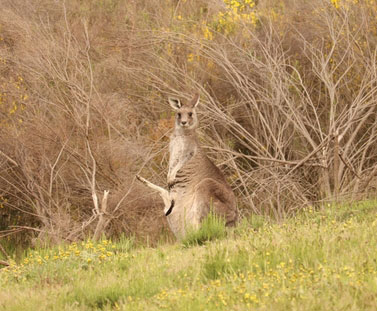iNaturalist
Help the University monitor and protect its on-campus biodiversity while building your knowledge about local species.

iNaturalist is a free-to-download mobile app used to record sightings of plants, animals, insects and fungi anywhere in the world. Track your sightings of biodiversity by taking photos of species and uploading them to the app.
There’s no need to be an expert to join in!
Share your observations with the iNaturalist community, who can help assign species’ names. If you’re a nature enthusiast yourself, help others identify what they have found.
How to get involved
-
Download the iNaturalist app onto your phone.
-
Create an account and start taking photos of species you find on campus.
-
Upload your photos along with location and time to your iNaturalist account. If you are unsure of the species name of your organism, identify your organism down to major animal group/life-form (e.g. bird, frog, plant, fungi). Allow fellow iNaturalist users to view your observations and let the community assign species names to your sightings!
-
Build your knowledge about biodiversity by connecting with other iNaturalist users and regularly submitting photos of your encounters with plants, animals, insects and fungi!
-
Join the University’s iNaturalist project page Biodiversity@Unimelb.
Join Biodiversity@Unimelb
The University has an iNaturalist project page that pools together sightings made on campus so we can better understand which species are occurring when and where.
-
Once you have created an iNaturalist account, search Biodiversity@Unimelb in iNaturalist and click join.
-
Start submitting sightings across any of our campuses to the project or sign up to a campus specific project. You can find campus specific projects by clicking on a campus on the leader board from the Biodiversity@Unimelb iNaturalist page.
Species found on campus
Help us conserve nature on campus
Staff, students and members of the public can all get involved.
Data generated by the app will be used to inform Metric 7 of the University’s Biodiversity Baseline Data Project, which is a record of the number of fauna and fungi species found on campus. The project strives to halt biodiversity loss by establishing baseline measurements at each campus for the University to compare to in future years.
iNaturalist also shares species sightings data with scientific databases Atlas of Living Australia and Global Biodiversity Information Facility to be analysed by researchers for essential conservation projects. By submitting your species observations, you can contribute to conservation research and help protect species worldwide.






